Black and White Clip Art Showing Frenchman Leading With One Foot on Street Lamp Post
O ne day 55 years agone, Joel Meyerowitz was roaming the streets of his native New York with a 35mm camera when he glimpsed something through an arcade window that stopped him in his tracks. A young adult female was continuing with her back to him, tenderly grooming her boyfriend's pompadour with a comb, just every bit Meyerowitz imagined she had curled the pilus of dolls when she was a girl.
As we sit in front of the log burn in his converted barn in Tuscany in the February dusk, Meyerowitz remembers what happened side by side. "I snuck up as shut as I could and tried to capture the intimacy of that moment. I was very shy and it took all my courage – if the plate glass hadn't been there, peradventure I wouldn't have dared go so close." In the resulting impress, the boy glances from the shadows into the camera with furrowed brow, a moment of pure vulnerability that a split second subsequently might have curdled into rage at Meyerowitz's intrusion. And, simply possibly, the photographer might have got his donkey kicked.
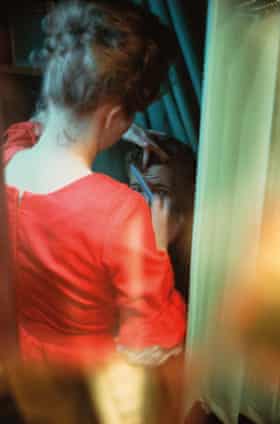
This was i of the American street photographer's first images. What'southward striking virtually it is not so much the bravura seizing of the moment. Cartier-Bresson, later on all, had already fabricated his name doing that and Meyerowitz was following the Frenchman's atomic number 82. Rather, it was that the seized moment was in color. "In art photography, there was nevertheless this huge prejudice against colour equally if only blackness and white were aesthetically justifiable," he recalls. "I never bought that: for me colour is essential; I instinctively felt I needed it to give my piece of work force. Just equally we take odor memories, nosotros have color memories. I mean the world is in colour, right?"
Meyerowitz was seduced into photography before that year when, as a immature fine art director, he witnessed an ad agency shoot by the keen American photographer Robert Frank for a booklet he was designing. "The manner he weaved in and out of the girls he was shooting, my God, that was a revelation to me. You could motion while working the camera. Wow! I wanted to do that, too."
Until that epiphany, Meyerowitz hadn't been sure what he wanted to do with his life. He was studying role time for a primary's in fine art history and dabbling in abstruse painting. Afterwards seeing Frank at work, however, he went back to the advertisement bureau function that afternoon and quit. "Harry, my boss, couldn't believe me. Later, though, he bought me a camera."
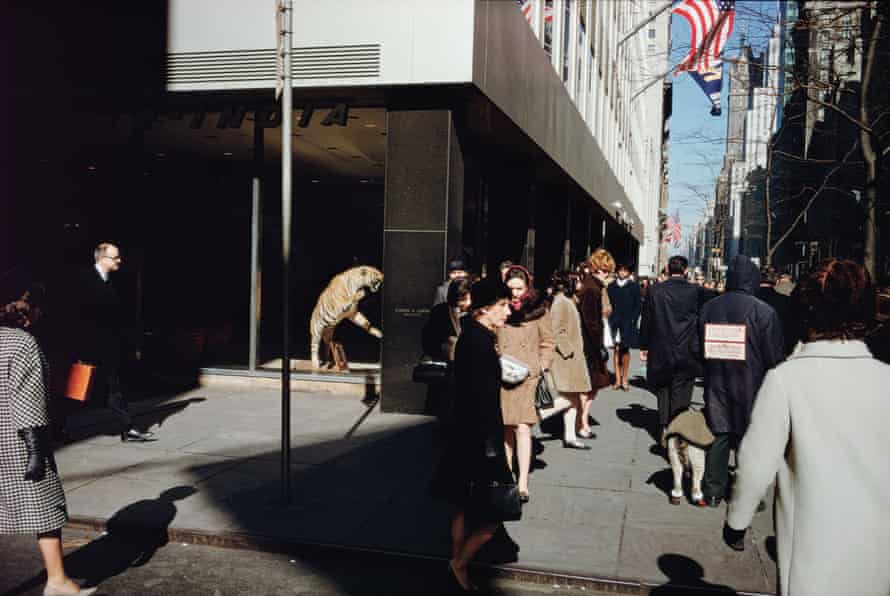
From the start, Meyerowitz and fellow street photographer and friend Garry Winogrand sought to explore the erotics of the street: "The heat of the gazes between people, the charged mystery that arises from capturing adventure moments on the fly," he says.
In his new autobiographical photography book Where I Find Myself, Meyerowitz writes of those heady days: "Nosotros loved watching the play of light on Fifth Avenue and how it gave significant to things. Nosotros watched the seasons change and with it women's wearable getting lighter and sexier. We were living and breathing photography … We felt we were part of a movement that was making photography more interesting than information technology always was before."
But first he had to overcome his shyness. He did this with his initial project – taking shots of bystanders at street parades. "Nobody thinks there's anything odd about a lensman at a parade, so that gave me invisibility." I especially successful image taken in New York in 1963 depicts a relaxed, smiling, cardigan-wearing African American man continuing with his dog on the pavement adjacent to a tightly wound white man in a suit who is holding his mitt to his heart and glaring past the black man.

"He's saluting the flag that's off photographic camera," explains Meyerowitz. It'due south a superbly unresolved prototype but sets up all kinds of dual tensions – blackness/white, genial/fraught, patriotic/not then much. Y'all need to get on the streets and seize the adventure moments," he says.
Of his street images, my favourite depicts a Frenchman who has fallen outside a Paris Métro station one day in 1967. By this stage, Meyerowitz had started to take longer shots – moving back from eight to twenty anxiety from what he sought to capture. It's a shift from bedchamber music to symphony. Everybody is looking at the fallen man, the chichi immature woman descending the station steps, the commitment guy pushing boxes on a trolley, a cyclist swivelling to get a meliorate await at a stranger's misfortune. A worker in overalls even steps over the decumbent human being, carrying a hammer that takes on sinister import. "Those fuckers," laughs Meyerowitz. "Non one of them helps him upward."
The image is an arresting network of gazes and furtive glances. "In the 60s and 70s y'all could look at my street photographs and trace lines from the optics of people connecting with other people'due south eyes, setting upwardly these forcefulness fields. "
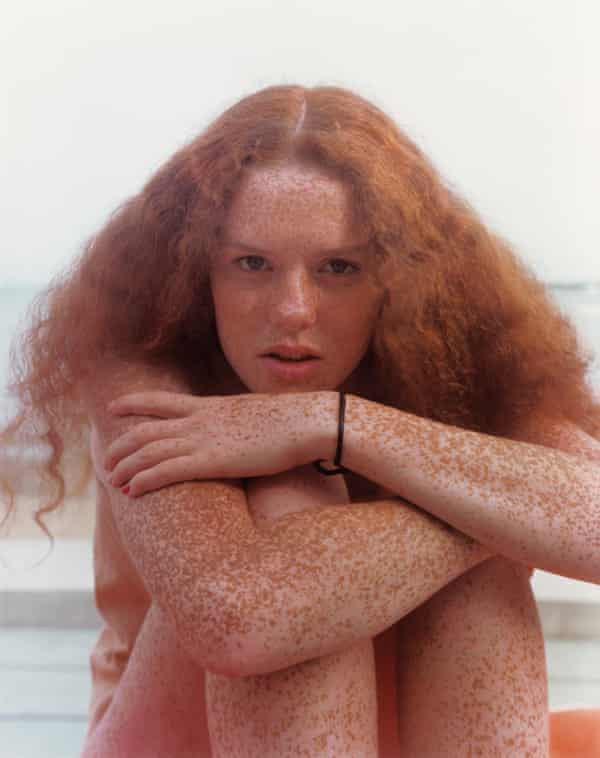
Today, what entranced Joel Meyerowitz about the street is all but dead. "Nobody's looking at each other. Everybody's glued to their phones." But street photography still exists? "It's thriving but non in the manner I used to do it. The best street photographers now show humans dwarfed past advertisement billboards. The street has lost its savour."
As his work evolved, Meyerowitz became a tougher, indomitable street presence, and still one – like the all-time photographers – able to charm his subjects into giving him what he wants. Yous can meet that in the fashion he got swimsuited immature women to pose guilelessly near his summer dwelling in Provincetown, Massachusetts, for a serial of early 80s pictures that prefigured Rineke Dijkstra's similar subject matter. How, for instance, he inveigles a red-headed young adult female – "as exotic as a tropical fish" – to pose for his camera, exposing her freckled arms.
You tin see this process nearly clearly, though, in the pictures Meyerowitz took at Ground Zero. On 9/eleven he was out of town, but headed dwelling house bent on the idea of photographing the aftermath. "When I got to Ground Nada, I had my Leica out and then I got a thump in the back from a cop. They said: 'You can't take a flick here, buddy, this is a criminal offense scene.' Well, I argued with them – it's a public space, my metropolis, I can practice what the fuck I want. And I did."
His subsequent photo essay was a charged memorial to the grandiosity of the ruin, and the people who worked in it, hunting for teeth, basic, anything that might identify victims. "The care they invested in this task brought to the vast physical dimensions of the site an intimate, spiritual dimension," he says.
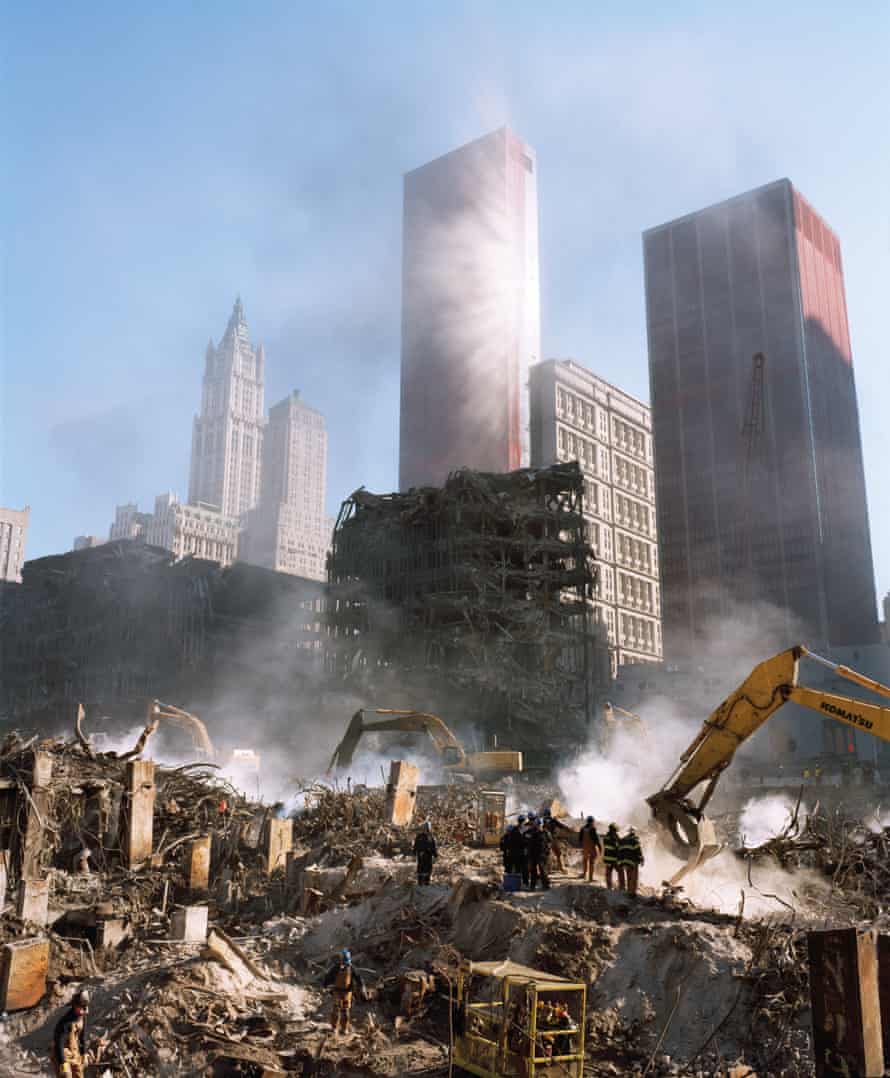
The following spring, he was in Italia. "The world had inverse considering of 9/11 and then when I saw the thousands of years of continuous cultivation of Tuscan landscape, it was cracking solace." In Where I Discover Myself, Meyerowitz juxtaposes photographs of Ground Zero with the cypresses and fields of Tuscany – there'southward a spiritual dimension to these rural images, likewise, a renewal by means of natural goodness in the aftermath of evil.
Today, the photographer has definitively swapped the street for the farm, the Bronx for a home in the hills south of Siena. He and his English second wife, the novelist Maggie Barrett, have spent the past four years converting a barn to a rural retreat. "We've uprooted from everything and settled here without family unit or much in the style of friends, but with each other. It's an experiment in intimacy." We beverage tea (his wife'due south PG Tips) and he serves me week-old ricotta made by the farmer who lives side by side door.
Meyerowitz has described his urban photography as jazz, a sinuous dance through the streets with a handheld camera. Only later in his career did he add together landscape to his repertoire. "It happened in Provincetown in the late 70s. I moved every summertime to somewhere where life was simple and I started to see differently. And what I saw, I needed to capture with a view camera, an 8x10 camera. With that you lot don't riff, you don't do jazz. You lot do what it tells you." So what was the appeal? "Everything was rendered with this incredible visual acuity. It blew me away." His Bay/Heaven series from the tardily 70s and early 80s, in particular, purge humans for the essentials of sky, ocean and land.
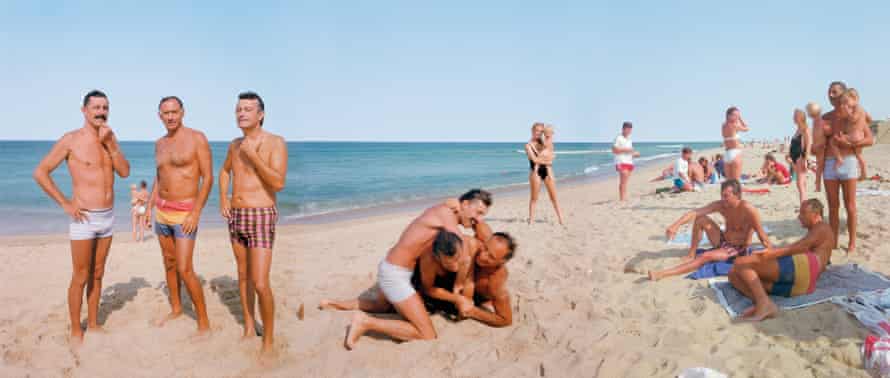
For the past iv years, Meyerowitz has retreated from the world into his studio, where he has been photographing humble objects he's picked up from Provençal brocantes and Tuscan junk shops. His work, he thinks, riffs on Cézanne and Giorgio Morandi'due south still lifes. "I'm obsessed with these pictorial puzzles." He started with two or three objects and has at present moved on to grand arrangements that remind me of the complicated positioning of humans in his street photos.
Bald, sinewy (half a lifetime ago he missed condign a US Olympic swimmer by thousandths of a second), and chock with life, Meyerowitz turns lxxx on 6 March. Any plans to retire, I ask, every bit he shows me out? "Artists don't retire. We just move on to new creative obsessions. Well, that'due south what I practice."
- Joel Meyerowitz: Where I Find Myself is published by Laurence Male monarch on 12 March.
Source: https://www.theguardian.com/artanddesign/2018/mar/07/photography-legend-joel-meyerowitz-phones-killed-sexiness-street-most-stunning-shots
0 Response to "Black and White Clip Art Showing Frenchman Leading With One Foot on Street Lamp Post"
Enregistrer un commentaire